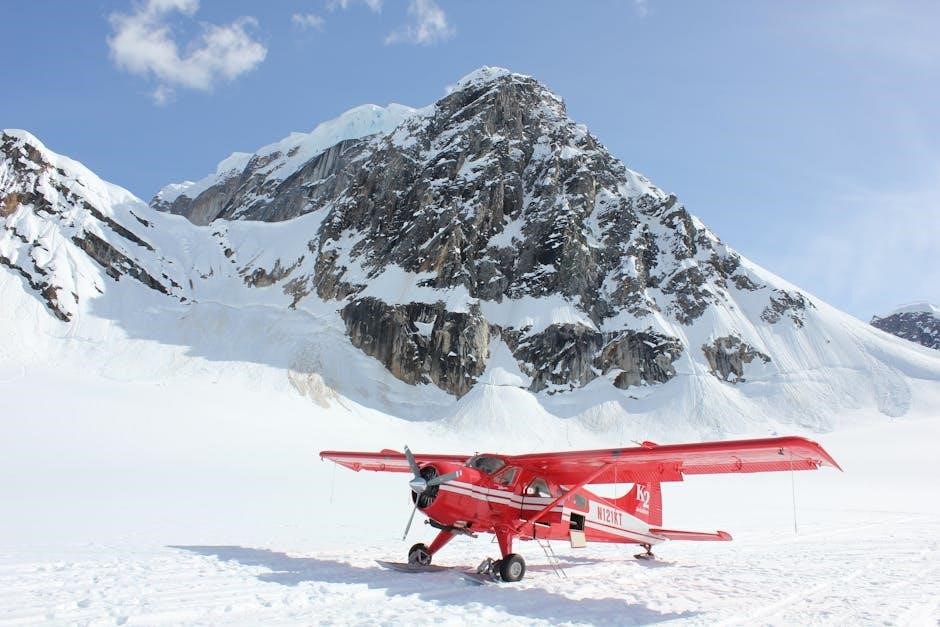The fight, flight, freeze, and fawn responses are automatic survival strategies triggered by perceived threats. These responses are rooted in the nervous system, enabling individuals to react swiftly to danger, with each serving distinct purposes, from confrontation to people-pleasing, and are closely linked to trauma and stress reactions.
The Evolutionary Background of Stress Responses
The fight, flight, freeze, and fawn responses are deeply rooted in evolution, serving as survival mechanisms to protect organisms from danger. These reactions are mediated by the nervous system, enabling quick responses to threats without conscious thought. Over time, humans and animals developed these strategies to adapt to predators, environmental hazards, and social challenges. Each response—whether confronting danger, escaping, immobilizing, or people-pleasing—offered distinct survival benefits, shaping how species react to stress and trauma.

The Role of the Nervous System in Trauma Responses
The nervous system plays a critical role in trauma responses, dividing into sympathetic and parasympathetic branches to manage fight, flight, freeze, and fawn reactions, ensuring survival.
3.1. The Sympathetic Nervous System: Fight or Flight
The sympathetic nervous system triggers the fight-or-flight response, releasing stress hormones like adrenaline to prepare the body for action. It increases heart rate, accelerates breathing, and sharpens senses, enabling individuals to either confront or escape danger swiftly. This system prioritizes immediate survival over restorative functions, ensuring rapid reactions to threats. Its activation is crucial for responding to acute stress but can become hyperactive in trauma, leading to chronic hyperarousal.
3.2. The Parasympathetic Nervous System: Freeze and Recovery
The parasympathetic nervous system promotes relaxation and recovery, countering the sympathetic system’s fight-or-flight response. During a freeze response, it reduces heart rate and metabolic activity, conserving energy. This system helps the body return to balance after stress, facilitating healing and calm. It plays a crucial role in trauma recovery by reestablishing equilibrium and reducing hyperarousal, allowing individuals to process and integrate traumatic experiences more effectively.
Understanding the Fight Response
The fight response is an adaptive reaction to threats, preparing the body to confront danger through increased heart rate, heightened senses, and muscle tension, enabling proactive defense.
4.1. Definition and Physiological Mechanisms
The fight response is a survival mechanism where the body prepares to confront threats by activating the sympathetic nervous system. This triggers increased heart rate, rapid breathing, and heightened muscle tension. Blood flow redirects to extremities, enhancing strength and agility. Adrenaline and cortisol surge, sharpening focus and energy. These physiological changes enable individuals to react assertively, prioritizing immediate action over safety, making it a primal defense strategy against perceived danger.
4.2. Examples of Fight Response in Real-Life Scenarios
The fight response manifests in scenarios requiring assertive action. For instance, standing up to a bully, defending oneself physically, or confronting an aggressor. It also appears in competitive environments, like sports, where individuals push their limits. Additionally, people may exhibit fight by advocating for their rights or challenging unfair situations. These actions exemplify how the fight response enables individuals to take control and address threats directly, leveraging adrenaline to overcome obstacles and protect their interests.

The Flight Response: Escaping from Danger
The flight response is a survival mechanism enabling quick escape from danger. It activates increased heart rate, rapid breathing, and heightened senses to prioritize immediate safety.
5.1. How the Body Prepares for Flight
The flight response triggers rapid physiological changes to enable escape. The sympathetic nervous system activates, releasing adrenaline, which increases heart rate and breathing. Blood flow redirects to muscles for energy, and glucose is released for quick fuel. Pupils dilate to enhance vision, and senses sharpen for heightened awareness. This biological preparation prioritizes speed and agility, allowing individuals to react swiftly and effectively to danger, ensuring immediate survival through swift escape mechanisms.
5.2. Psychological Triggers for the Flight Response
The flight response is psychologically triggered by the perception of a threat that can be escaped. The brain rapidly assesses danger, and if escape seems possible, it activates the flight mechanism. Fear and anxiety drive this reaction, prioritizing immediate safety. Past trauma can lower the threshold for triggering flight, making individuals more prone to this response even in less dangerous situations. This psychological activation ensures survival by prompting swift action to avoid perceived harm.

Freeze Response: The Paradox of Immobility
The freeze response is a survival strategy where the body becomes immobile in the face of danger, often when escape or fight responses are ineffective, linked to trauma.
6.1. Why the Brain Chooses to Freeze
The brain selects the freeze response when fight, flight, or fawn strategies are ineffective, often in situations where escape seems impossible. This evolutionary mechanism prioritizes survival by immobilizing the body, reducing visibility to threats. It is a last-resort strategy, reflecting the brain’s assessment of danger and the futility of other responses, highlighting the complex interplay between fear, survival instincts, and physiological reactions.
6.2. Consequences of Freezing in Traumatic Situations
Freezing during traumatic events can lead to feelings of helplessness and emotional numbing, as the individual is unable to act. This immobilization may result in heightened anxiety and hypervigilance post-trauma, affecting future stress responses. The brain’s default to freezing can impair recovery, fostering long-term psychological distress and complicating healing processes. It underscores the delicate interplay between survival mechanisms and mental health outcomes.
The Fawn Response: People-Pleasing as Survival
The fawn response, a stress reaction to trauma, involves people-pleasing to avoid conflict. It often stems from childhood experiences where other survival strategies were ineffective.
7.1. The Psychology Behind the Fawn Response
The fawn response is rooted in fear and a deep-seated need for safety, often developing in childhood trauma. It involves compliance and people-pleasing to avoid conflict or rejection. This strategy emerges when other survival responses like fight, flight, or freeze are perceived as ineffective. The individual prioritizes others’ needs to maintain connection, even at personal cost. Chronic fawning can lead to emotional suppression, identity diffusion, and difficulty asserting boundaries, making it a complex psychological adaptation to traumatic experiences.
7.2. Long-Term Effects of the Fawn Response
Chronic use of the fawn response can lead to self-esteem issues, emotional numbness, and difficulty asserting personal needs. Over time, it may result in anxiety, depression, or identity confusion. Individuals may struggle with boundaries, attracting exploitative relationships, and feel disconnected from their true selves. This pattern can also manifest physically, with chronic stress impacting health. Addressing these effects requires self-awareness, therapy, and rebuilding emotional resilience to break the cycle of people-pleasing and reclaim personal autonomy.
The Impact of Trauma on Stress Responses
Trauma alters the body’s stress response system, making fight/flight reactions more easily triggered. This hyperarousal state can lead to chronic anxiety and emotional dysregulation, affecting daily life.
8.1. Hyperarousal and Hypervigilance
Hyperarousal and hypervigilance are common outcomes of trauma, where the body remains in a heightened state of alertness. This occurs due to the nervous system becoming overly sensitive, making it easier to trigger fight or flight responses. Individuals may experience physical symptoms like rapid heartbeat and psychological effects such as anxiety or an exaggerated startle response. These states interfere with emotional regulation, making it difficult to relax or feel safe, even in non-threatening situations.
8.2. How Trauma Alters the Threshold for Stress Responses
Trauma can significantly lower the threshold for activating stress responses, making individuals more reactive to minor stimuli. This occurs because the nervous system becomes hyper-responsive, reducing the intensity of triggers needed to activate fight, flight, or freeze modes. Over time, this heightened sensitivity can lead to exaggerated startle responses, anxiety, or hypervigilance, even in safe environments, disrupting daily life and emotional stability.

Coping Strategies and Healing from Trauma
Effective coping strategies, such as therapy and mindfulness, help individuals heal from trauma by regulating the nervous system and promoting emotional resilience in a supportive environment.
9.1. Mindfulness and Self-Awareness Practices
Mindfulness and self-awareness are powerful tools for healing from trauma. By cultivating present-moment awareness, individuals can regulate their nervous system, reducing hyperarousal and hypervigilance. Practices like meditation and deep breathing help recognize triggers and responses, fostering emotional resilience. These techniques empower individuals to observe their reactions without judgment, creating space for intentional choices rather than automatic trauma responses. Over time, mindfulness enhances grounding and emotional regulation, aiding in the recovery process.
9.2. Therapy and Professional Guidance
Therapy and professional guidance play a crucial role in healing from trauma. Trained therapists help individuals identify and understand their stress response patterns, offering tailored strategies to manage triggers. Techniques like cognitive-behavioral therapy (CBT) and trauma-focused approaches empower individuals to process traumatic experiences. Professionals create a safe space for exploration, fostering resilience and emotional regulation. With expert support, individuals can develop healthier coping mechanisms and reduce the intensity of fight, flight, freeze, or fawn responses, promoting long-term recovery and well-being.
Understanding the fight, flight, freeze, and fawn responses offers insights into survival mechanisms shaped by trauma and stress. While these reactions are adaptive in danger, they can become maladaptive when triggered unnecessarily. Healing involves recognizing these patterns, fostering self-awareness, and engaging in therapeutic practices. With time and support, individuals can move beyond these responses, rebuilding resilience and reclaiming emotional balance. The journey toward recovery is a testament to human adaptability and the potential for growth beyond trauma.
